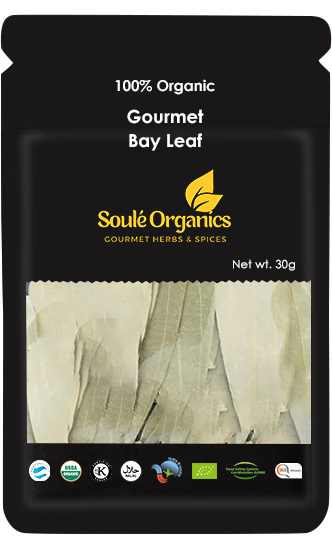BAY LEAF


What Is Bay Leaf?
Bay leaves are a fragrant leaf from the laurel tree used as an herb. Bay leaves are available whole—either fresh or dried—or ground into a powder. The leaves are added to slow-cooked recipes, such as soups, sauces, and stews, and are removed before serving the dish. They have a floral and herbal scent reminiscent of oregano and thyme and are used more often than any other herb.
Culinary Use
Because the leaves do not soften as they cook, bay leaves are added to simmering sauces or included in a braising liquid, and then removed before serving. The leaves have sharp points that can cut the mouth, cause choking, or even slice into the digestive tract. Simply add the whole dried leaf to the recipe and take out once the dish is finished cooking. If using the fresh, California bay leaves, add half of the amount called for (which may mean tearing a leaf in half).
Bay leaves should be added at the beginning of cooking as the longer they simmer, the more time they have to release flavor and allow it to infuse the dish. In addition to simmering in soups and stews, bay leaves are great for stuffing into the cavity of a chicken before roasting it, and can also be added to the liquid when cooking rice. When ground into a powder, bay leaf is used similarly to a spice.
Health Benefits
- Good for Common Cold and Flu
- Helps in Weight Loss
- Lowers Blood Sugar Level
- Morning Sickness in Pregnancy
- Fights Inflammations
- Treats Upset Stomach
Nutrition Value
100g of Bay Leaves contains:
- Calories: 314
- Total Fat: 8g
- Sodium: 23mg
- Carbohydrates: 75g
- Protein: 8g
Forms Available
- Dried

